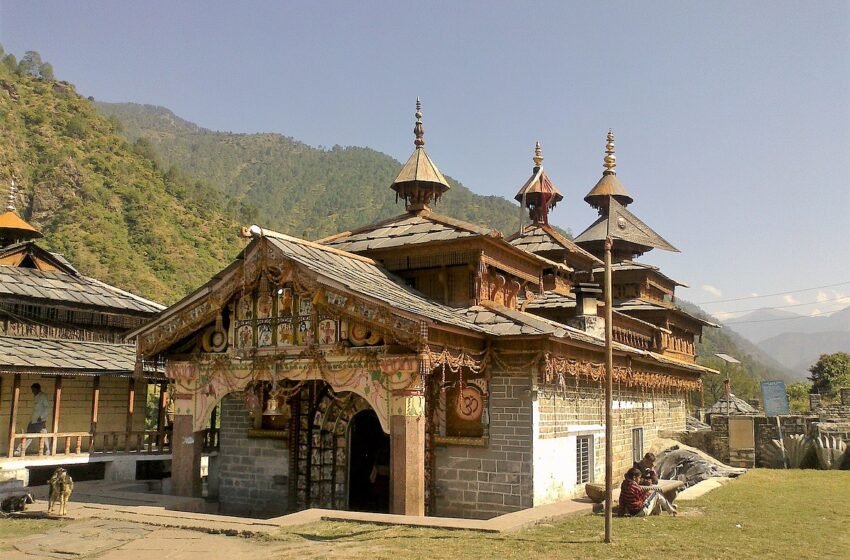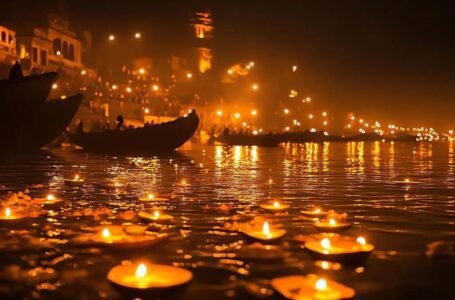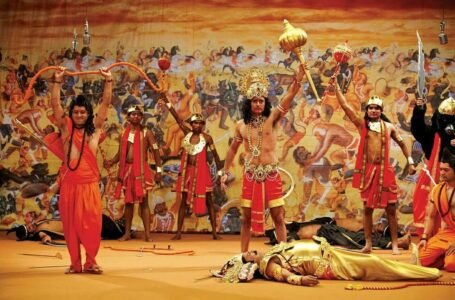Mahasu Devta: The Guardian Deity of the Central Himalayas

The landscapes of the Central Himalayas exude odorous spirituality, revering nature’s infinitely beautiful manifestations. Among the deities worshipped in these green hills, Mahasu holds crucial media spectacles invoked as a god of determination and protection. For Himachal Pradesh and Uttarakhand, Mahasu Devta is worshipped as a guardian deity, an integral part of the people’s cultural and spiritual identity.
For centuries, the worship of Mahasu Devta forms the bedrock of the region’s faith. The divine figure stands for cultural icons, although to some extent, one can see his symbolism working into local rituals, customs, and social governance. At the very heart of this commitment lies the Mahasu Devta Temple at Hanol, which represents the ancient agnatic traditions of this region.
Origins and Etymology of Mahasu Devta
Mahasu Devta is a representation of four brothers: Botha, Vasik, Pavasi, and Chalda. These four deities are considered to be aspects of Lord Shiva, emanations of strength and divine authority; the protective deity and the arbiter of the causes is a practically possible basis of particular worship. According to local belief, these brothers descended to Earth to exorcise the land of evil and allow the establishment of harmony among the inhabitants.
The name “Mahasu” is said to be derived from the Sanskrit word “Maha Shabda,” meaning “great sound,” denoting the divine authority of the deity. It is also possibly derived from the expression meaning “great protector” in the local dialect. These etymological aspects relate to the motif of a deity who stands at the head of a community and provides for the residents of the Central Himalayas.
The History of Mahasu Devta and His Worship
Mahasu Devta’s worship is lodged firmly in transitions of history in the Himalayas. Associated with the establishment of Tantric developments on rituals, mantras, and divine energy, the faith in Mahasu Devta dates back centuries more than a millennium ago. Since then, this spiritual framework manifested insomuch that it took the unique local form of tradition of worship centred on the four Mahasu brothers.
The Mahasu Devta temple in Hanol is the most prominent shrine dedicated to the deity. It is believed to have been built during the 9th century and is an architectural marvel constructed in the Kath-Kuni or Koti-Banal style, in which interlocking wooden beams and stones ensure stability in this earthquake-prone region. The temple has integrated the utilitarian with that of aesthetic sensibility, embellished with carved motifs and sculptures depicting scenes from local folklore.
The legends associated with the temple recount the miraculous appearance of the deity in Hanol and, also, the victories over malevolent forces, primarily the demon Kirmir, who brought terror upon the region until he was vanquished by the divine intrusion of Mahasu Devta. These legends are indicative of the deity’s being an icon of justice and protector of the righteous.
Mythological Significance of Mahasu Devta
The mythology of Mahasu Devta brims with diverse themes, from divine justice to spiritual intervention to the eternal conflict between good and evil. Local mythology believes that Mahasu Devta came into being at the behest of the wronged to represent the merit of courage, wisdom, and fair play.
One of the most popular mythological tales recounts how one demon wreaked violence and havoc in the valley. Thus, in response to the people’s prayer, Lord Shiva sent the four brothers, Mahasu, to Earth. Working in unison, the brothers vanquished the demon and restored peace to the valley. This act established them as the premier protectors, and, in appreciation, worship emerged.
The four brothers of Mahasu fetch different traits in their manifestations-from kingship to guardianship and prosperity. Worshipping the deities, and working together reflect the holistic view of the Mountain people, where balancing and harmony assume prime importance.
Festivals and Rituals
Mahasu Devta worship is marked by a rich calendar of festivals and rituals, providing a platform for bonding among people and preservation of culture. The most notable of them all is the Mahasu Jatara, an annual festival celebrated in August or September. This festival sees devotees from far and wide gathering to join in the offer of processions, dance, and prayer to their deity.
The festival is characterized by musician performances on traditional local instruments like drums and bugles, accompanied by professional and simple dances donned in colourful attire. Ordinary offerings under the Deity stand for local produce-namely grains and fruits in a show of gratitude for the blessings offered.
Every ritual takes place at the Mahasu Devta Temple and usually involves the chanting of hymns or mystical verses, the shining of oil lamps, and the supply of holy water from the rivers in the vicinity. While animal offerings used to be common in ceremonies in the past, in modern times a trend toward using instead a ritual of symbolic offerings acknowledges the emerging spirit of compassion and sensitivity to ecological awareness.
Mahasu Devta and Social Governance
Besides his spiritual significance, Mahasu Devta also lies at the very hub of the community and legal administration of Central Himalayan locales. Traditionally perceived as the last arbitrator, the deity uses divine wisdom to eliminate disputes and bring about justice. Therefore, when the devotees feel the need for divine intervention for conflict resolution, they go to the temple with the belief that there will be justice for one and all.
Theocratic governance witnesses a fine blend of religious teaching into daily life. Deity-selected principles of justice and fairness are adhered to as the key ideas for regulating communal interactions and policymaking. It is due to this very uniqueness of Mahasu Devta’s role that the relationship between faith and civil communion is portrayed in a system heading from the Himalayas.
Architectural Significance of the Mahasu Devta Temple
The Mahasu Devta Temple of Hanol is a proud reminder of the region’s architectural artistry. Kath-Kuni designs reflect not only the communal technical creativity but also their intense knowledge of surrounding nature. The use of locally sourced wood and stone helps the structure merge well with its environment, embodying sustainable principles.
The temple has paintings and carvings depicting mythological scenes along with scenes of everyday life. These portray not only the spiritual context but also the cultural stories of that time. The sanctum sanctorum houses the idol of Mahasu Devta, exuding divine energy that draws pilgrims from far and wide.
Legacy and Contemporary Relevance
With these values intact, those following Mahasu Devta adore him as their protector and guide. The tradition of his worship has transcended generations, remaining vibrant with modern changes in requisites, all the while keeping the essence intact.
Modern times accentuate the Mahasu Devta Temple as a major shrine for cultural tourism. It is drawing many tourists who wish to see some of its faith and architectural qualia. Efforts for the documentation and conservation of the associated traditions of Mahasu Devta are also waxing, rendering it a generational gift to hand down to the future.
Conclusion
Mahasu Devta epitomizes the spirit of the Central Himalayas, the land where tradition, spirituality, and community converge. In this regard, as guardian, dispenser of justice, cultural icon, Mahasu Devta invariably inspires faith and harmony in the people.
The worship of Mahasu Devta is not simply a religious affair but a way of life by which the core values of this region are made manifest: that of harmony, resilience, and respect for nature. His continuing legacy re-vibes a greater attachment between man and the Divine- a bond ever reverberates from time immemorial to the time present.


